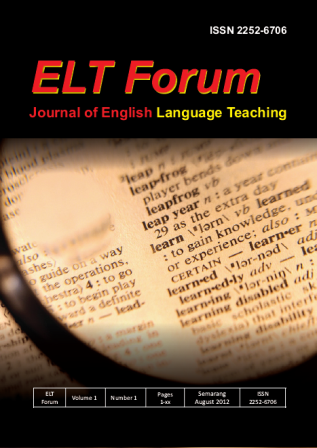STUDENTS’ DIFFICULTIES IN CHANGING ACTIVE VOICE INTO PASSIVE VOICE IN SIMPLE PRESENT TENSE AND SIMPLE PAST TENSE
Abstract
This study attempted to identify the kind of students’ difficulties in changing active voice into passive voice in simple present tense and simple past tense, and the cause of difficulties in changing active voice into passive voice in simple past tense and simple present tense. Descriptive qualitative study was used and the subject of this study was the ninth grade students of SMP N 2 Pemalang in the academic year of 2016/2017. The sampling process was administered by applying a random sampling technique. I collected the data by giving try out test in IX H and real test in IX G of SMP Negeri 2 Pemalang. The result of this research showed that in changing active voice into passive voice in simple present tense and simple past tense students faced difficulties in determining: pronoun (57 errors or 7.41%), to be (385 errors or 50.06%), past participle (177 errors or 23.01%), misordering (12.09%), passive order but active form (37 errors or 4.81%), and active order but passive form (20 errors or 2.60%). Based on the interview with the students, the cause of errors can be categorized into interlingual and intralingual. Interlingual errors happened because the interference of a native language into a target language, while intralingual error happened because of the complexity of the target language.



_.jpg)
_.jpg)




